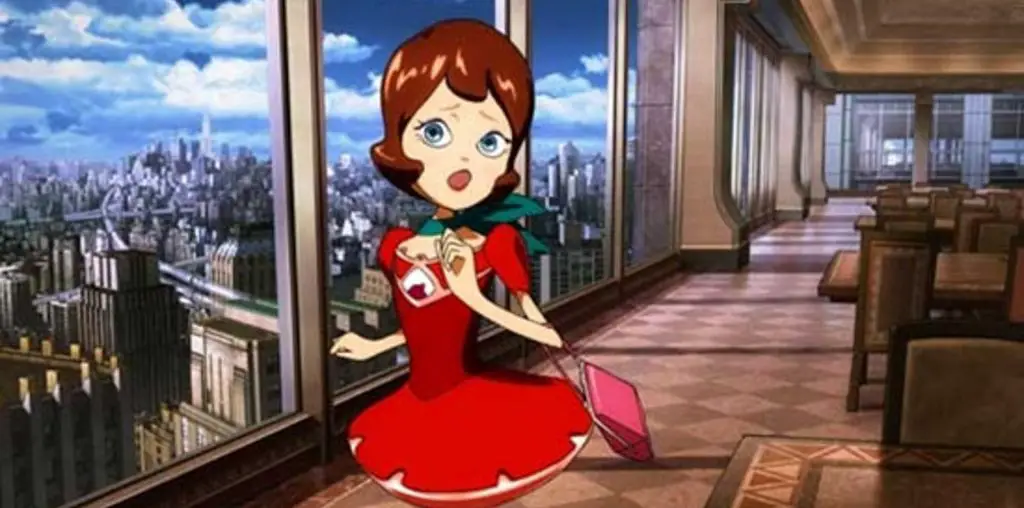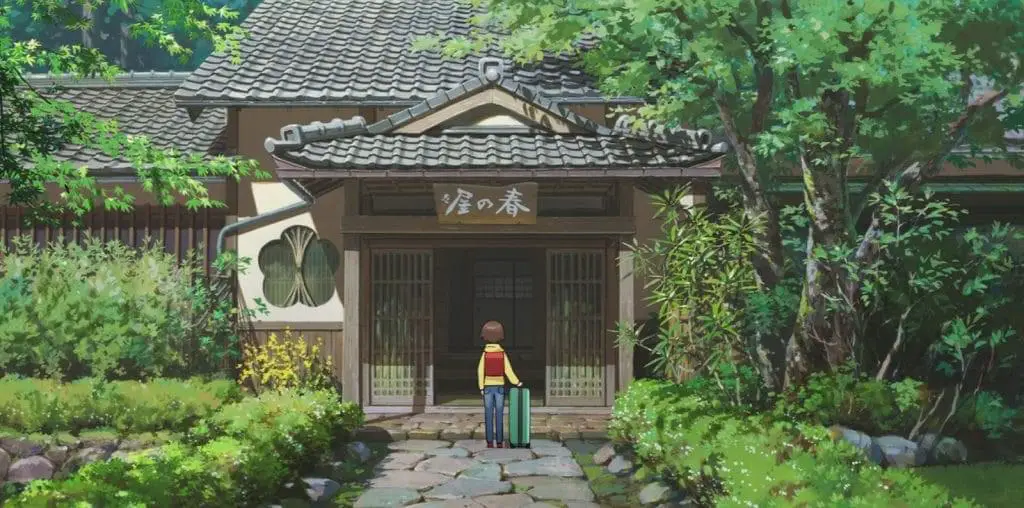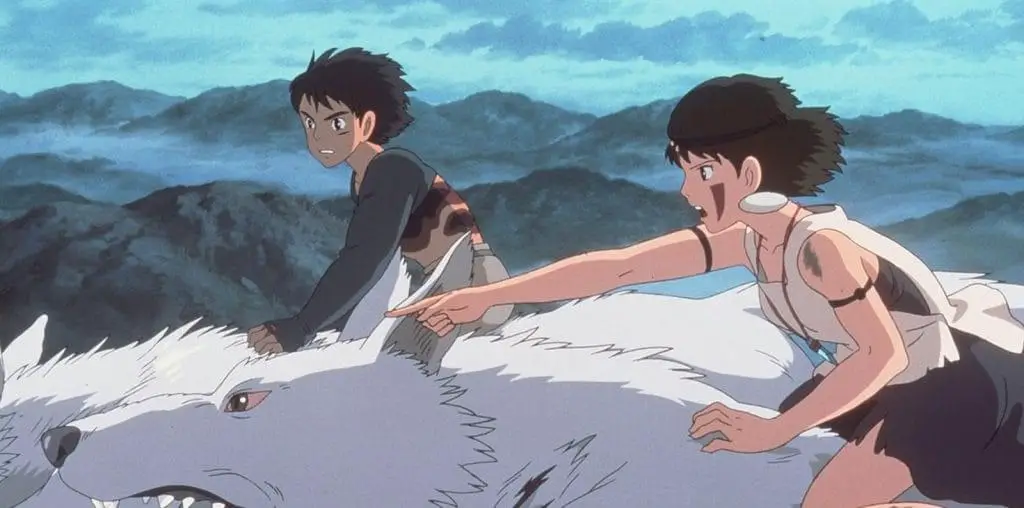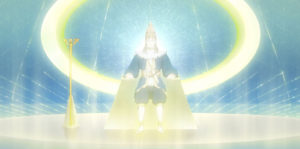
I’ve never heard of the Japanese The Laws of the Universe series. Apparently, it consists of four feature-length films, the first of which was released in 2015 with the subtitle Part 0. It also features dozens of central characters, some human or human-like, but most taking the form of some celestial or alien beast; they frequently collide in epic battles. Where exactly Isamu Imakake’s The Laws of the Universe: The Age of Elohim falls in the epic saga, I have no idea. What I do know is that, with zero awareness of its background, I enjoyed the gorgeous visuals and found myself pleasantly lost among the film’s dozens of characters, plot threads, and thematic elements.
But before recapping the plot, I’d like to backpedal to the film’s roots. Story creator Ryuho Okawa happens to be the founder of a pseudo-religious group called Happy Science. Deeply controversial, its teachings delve into reincarnation, angels, demons, Heaven, and Hell. As for the deity of worship? None other than the titular Elohim. Oh, and according to Happy Science, beings roamed the Earth over 300 million years ago.
This explains so much: the setting, Earth 150 million years ago; the characters, who represent a mix of aliens and humans worshiping Elohim, the God of the Earth; the central conflict involving Dahar, who hails from the dark side of the universe and plans to bring about the apocalypse. I had a very subtle, creeping feeling that there was more to The Age of Elohim than met the eye – some of the messages were weirdly specific and forceful as if they were preaching some rhetoric or, well, a religion.
To reiterate: you don’t have to know any of the backstory to appreciate the eye candy and the complexity and rhythm of the narrative. In fact, you’re probably better off not knowing, as the film’s epic nature suddenly shrinks down to mere propaganda for frankly/objectively lunatic beliefs. As an extravagant fantasy, however, damn, it’s almost on the level of Tolkien or Miyazaki (the latter of whom would’ve found all the violence abhorrent).
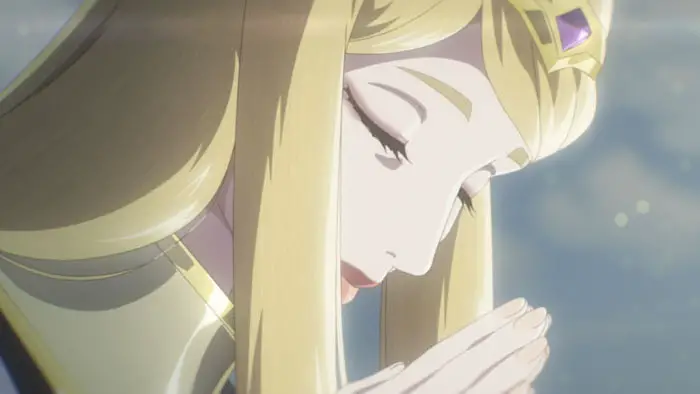
“…otherworldly, purple-eyed being called Yaizael comes to the Earth’s rescue with a legendary sword…”
Okay, the plot: When an armada of spaceships fails to destroy a sentient meteorite, an otherworldly, purple-eyed being called Yaizael (Brittany Cox in the dub) comes to the Earth’s rescue with a legendary sword. The commander-in-chief of the galactic federation, she’s invited by Lord Elohim himself to help save Earth from the aforementioned all-powerful Dahar. She trains the initially-skeptical troops. An epic face-off begins.
The animation in The Age of Elohim is stunning. Mostly hand-drawn but enhanced by computers here and there, the film contains numerous incredible set-pieces: the retro-futuristic central city with its waterfalls and sailboats; the sheer variety of humanoids and anthropomorphized animals (Reptilians); a breathless flight in and out of the water, wherein fish turn into birds as they change luminescent colors. The battles against robotic, spider-like aliens are brutal and massively scaled. It’s all spectacularly trippy.
Repeated messages of primarily justice and faith but also harmony, change, self-sacrifice, and accepting each other’s differences are further reiterated via chuckle-inducing pop tunes that permeate the narrative and provide additional commentary. The mythology here is rich and complex and, at times, questionable (I’m referring to the presence of Lucifer, for example, or the call for mass self-sacrifice).
I strongly recommend seeking out the original version, as the U.S. dub leaves a lot to be desired. “With the sword of justice, I’ll defeat evil once and for all!” is just one example of what I hope is a poorly-translated line as opposed to an accurate one. Viewed as an epic fantasy, Imakake’s basked-in-golden-hues fever dream of a film is inspired and highly artistic, if overly complex and at times kind of ridiculous. Viewed as an endorsement of a cult, The Laws of the Universe: The Age of Elohim is more than a little creepy and didactic. Any way you view it, it’s pretty damn fascinating.
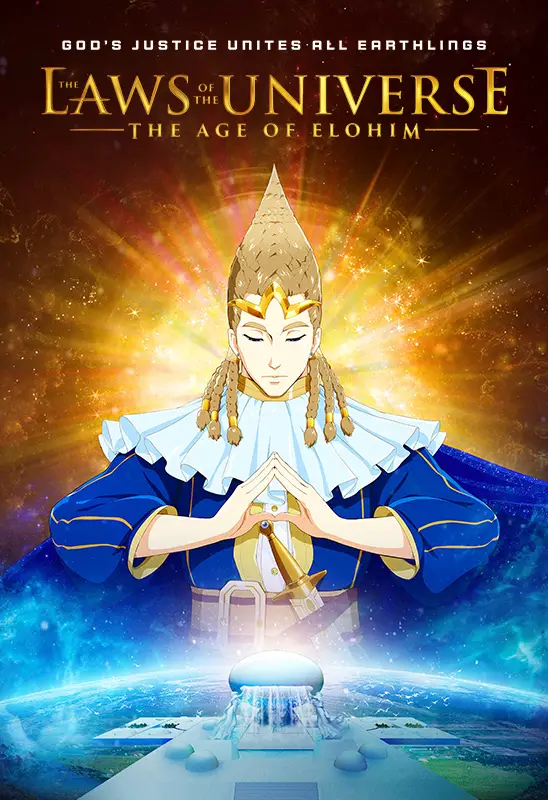
"…the mythology here is rich and complex, and at times questionable..."
